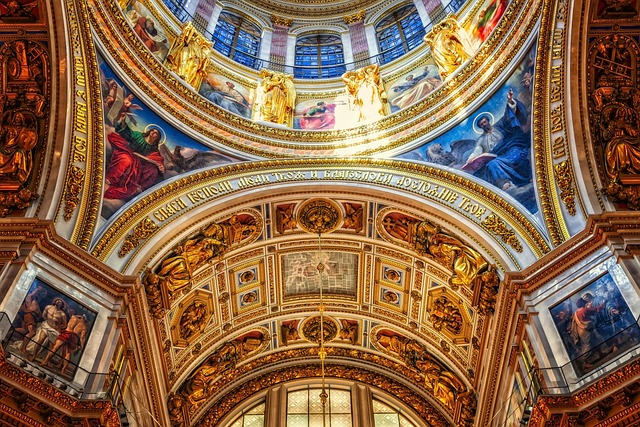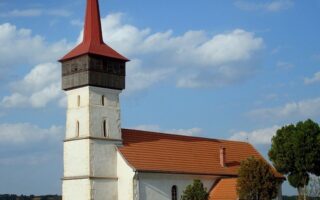Orthodox refers to a set of beliefs, practices, and traditions within various religious contexts. It is often associated with the Eastern Orthodox Church, which is one of the three major branches of Christianity, alongside Roman Catholicism and Protestantism. The term “orthodox” comes from the Greek words “orthos” meaning “correct” or “straight,” and “doxa” meaning “belief” or “opinion.” In the context of religion, being orthodox implies adhering to established doctrines, teachings, and rituals that have been passed down through generations.
Table of Contents
The Origins and History of Orthodox Christianity
Orthodox Christianity is a branch of Christianity that has a rich and fascinating history. To truly understand what it means to be Orthodox, it is important to delve into its origins and explore the historical context in which it emerged.
The roots of Orthodox Christianity can be traced back to the early days of Christianity itself. In the first few centuries after the death of Jesus Christ, the Christian faith spread rapidly throughout the Roman Empire. However, as the religion grew, so did the diversity of beliefs and practices among its followers.
This diversity led to a number of theological disputes and disagreements, particularly in regards to the nature of Jesus Christ. One of the most significant of these disputes was the Arian controversy, which centered around the question of whether Jesus was truly divine or simply a created being.
In an effort to resolve these disputes and establish a unified understanding of the faith, the early Christian leaders convened a series of ecumenical councils. These councils brought together bishops and theologians from across the empire to discuss and debate the key theological issues of the time.
It was during these councils that the foundations of Orthodox Christianity were laid. The councils affirmed the divinity of Jesus Christ and established the doctrine of the Holy Trinity, which holds that God exists as three distinct persons – the Father, the Son, and the Holy Spirit – in one divine essence.
The term “Orthodox” itself comes from the Greek word “orthodoxia,” which means “right belief” or “correct doctrine.” This term was used to distinguish those who adhered to the teachings of the ecumenical councils from those who held divergent beliefs.
Over the centuries, Orthodox Christianity spread throughout the Byzantine Empire and beyond, becoming the dominant form of Christianity in the Eastern Mediterranean and Eastern Europe. The Byzantine Empire, with its capital in Constantinople (modern-day Istanbul), served as the center of Orthodox Christianity and played a crucial role in its development.
The Byzantine Empire was known for its rich religious and cultural traditions, which greatly influenced the Orthodox Church. Byzantine art and architecture, with its iconic domes and intricate mosaics, became synonymous with Orthodox Christianity and continue to be celebrated to this day.
Despite its historical significance, Orthodox Christianity has often been overshadowed by its Western counterpart, Roman Catholicism. The Great Schism of 1054, which divided Christianity into the Eastern Orthodox and Roman Catholic Churches, further contributed to the relative obscurity of Orthodoxy in the West.
However, in recent years, there has been a growing interest in Orthodox Christianity among Westerners. Many are drawn to its ancient traditions, mystical spirituality, and emphasis on community and liturgy.
In conclusion, the origins and history of Orthodox Christianity provide valuable insights into what it means to be Orthodox. From its early days as a diverse and disputatious faith to its establishment as a unified and doctrinally sound tradition, Orthodox Christianity has a rich and complex history that continues to shape its identity today. Whether one is a lifelong adherent or a curious newcomer, exploring the origins and history of Orthodox Christianity can deepen one’s understanding and appreciation of this ancient and enduring faith.
Key Beliefs and Doctrines of the Orthodox Faith

What Orthodox Means
When it comes to religion, there are countless denominations and belief systems out there. One of the oldest and most traditional branches of Christianity is the Orthodox faith. But what does it mean to be Orthodox? In this article, we will explore the key beliefs and doctrines of the Orthodox faith.
At its core, the Orthodox faith is centered around the belief in the Holy Trinity. Orthodox Christians believe in one God who exists in three persons: the Father, the Son (Jesus Christ), and the Holy Spirit. This belief is fundamental to their understanding of God and shapes their worship and prayers.
Another key belief of the Orthodox faith is the authority of the Bible. Orthodox Christians view the Bible as the inspired word of God and believe that it contains all the necessary teachings for salvation. They hold a high reverence for Scripture and believe that it should be read and interpreted within the context of the Church’s tradition.
The Orthodox faith also places a strong emphasis on the sacraments. Sacraments are seen as visible signs of God’s grace and are considered essential for spiritual growth and salvation. The Orthodox Church recognizes seven sacraments, including baptism, chrismation, Eucharist, confession, marriage, holy orders, and anointing of the sick. These sacraments are seen as transformative experiences that bring believers closer to God.
In addition to these key beliefs, the Orthodox faith also has a rich tradition of liturgy and worship. Orthodox worship is known for its beauty, reverence, and sense of awe. The Divine Liturgy, the central act of worship in the Orthodox Church, is a solemn and mystical experience that transports believers into the presence of God. The use of icons, incense, and chant adds to the sensory experience and helps to create a sacred atmosphere.
Orthodox Christians also have a deep respect for the saints and the Virgin Mary. They believe that the saints, who have lived holy lives and are now in the presence of God, can intercede on behalf of believers. The Virgin Mary, in particular, holds a special place in Orthodox devotion. She is venerated as the Theotokos, the Mother of God, and is seen as a model of faith and obedience.
One of the distinguishing features of the Orthodox faith is its strong sense of tradition and continuity. Orthodox Christians believe that their faith has been passed down from the apostles and that they are part of the one, holy, catholic, and apostolic Church. They hold a deep respect for the teachings and practices of the early Church fathers and seek to preserve and transmit this tradition to future generations.
In conclusion, being Orthodox means embracing a set of key beliefs and doctrines that shape the way one understands and practices their faith. From the belief in the Holy Trinity to the authority of the Bible, from the importance of sacraments to the rich tradition of liturgy and worship, the Orthodox faith offers a unique and profound spiritual experience. Whether you are already Orthodox or simply curious about this ancient faith, exploring its key beliefs and doctrines can deepen your understanding and appreciation of what it means to be Orthodox.
The Role of Icons and Symbolism in Orthodox Worship
Orthodox Christianity is a rich and ancient tradition that has captivated the hearts and minds of believers for centuries. One of the most distinctive aspects of Orthodox worship is the prominent role of icons and symbolism. These visual representations play a vital role in the spiritual life of Orthodox Christians, serving as windows into the divine and aids in prayer and meditation.
Icons, which are sacred images of Christ, the Virgin Mary, and the saints, are not mere decorations in an Orthodox church. They are considered to be windows into the heavenly realm, offering a glimpse of the divine presence. When Orthodox Christians enter a church, they are immediately surrounded by a multitude of icons, each telling a story and inviting them into a deeper encounter with God.
The use of icons in Orthodox worship can be traced back to the early centuries of Christianity. In a time when many people were illiterate, icons served as a means of teaching and conveying the truths of the faith. They were visual aids that helped believers to understand and contemplate the mysteries of God. Even today, icons continue to fulfill this role, guiding Orthodox Christians in their spiritual journey.
Icons are not worshipped in Orthodox Christianity, but rather venerated. This distinction is crucial. Veneration is an act of reverence and respect, acknowledging the presence of the divine in the icon. It is a way of honoring the person depicted in the image, whether it be Christ, the Virgin Mary, or a saint. Orthodox Christians kiss icons as a sign of love and devotion, recognizing that the person represented in the image is not merely a historical figure, but a living presence in their lives.
Symbolism is another integral aspect of Orthodox worship. From the colors used in liturgical vestments to the gestures and postures of the priests, every element in the Orthodox liturgy is pregnant with meaning. Symbolism helps to create a sacred atmosphere and allows the worshipper to enter into a deeper spiritual experience.
For example, the use of incense in Orthodox worship is not merely a pleasant fragrance, but a symbol of the prayers of the faithful rising to heaven. The swinging of the censer represents the movement of the Holy Spirit, filling the church with His presence. The use of candles, on the other hand, symbolizes the light of Christ, dispelling the darkness of sin and ignorance.
In addition to icons and symbolism, Orthodox worship is also characterized by a rich tradition of hymnography. Hymns are an integral part of the liturgy, expressing the faith and theology of the Church in poetic form. They serve as a means of praising God, teaching the faithful, and creating a sense of unity among the worshippers.
The role of icons and symbolism in Orthodox worship cannot be overstated. They are not mere decorations or rituals, but powerful tools that aid believers in their spiritual journey. Icons invite us to contemplate the divine presence, while symbolism helps us to enter into a deeper understanding of the mysteries of God. Together with hymnography, they create a rich tapestry of worship that engages all the senses and draws us closer to the divine. So, the next time you enter an Orthodox church, take a moment to gaze upon the icons, breathe in the fragrance of incense, and let the symbolism guide you into a deeper encounter with God.
Orthodox Traditions and Practices: A Closer Look
Orthodox traditions and practices have been an integral part of Christianity for centuries. But what does it really mean to be Orthodox? In this article, we will take a closer look at the essence of Orthodox Christianity and explore some of its key traditions and practices.
At its core, being Orthodox means adhering to the teachings and beliefs of the early Christian Church. Orthodox Christians believe in the Holy Trinity – the Father, the Son, and the Holy Spirit – and the divinity of Jesus Christ. They also hold the Bible as a sacred text and follow the teachings of the apostles and early Church fathers.
One of the most distinctive aspects of Orthodox Christianity is its rich liturgical tradition. Orthodox worship services are known for their beauty, solemnity, and reverence. The Divine Liturgy, the central act of worship in Orthodox churches, is a celebration of the Eucharist, where the faithful partake in the body and blood of Christ. The liturgy is conducted in a language that is often ancient and symbolic, adding to the sense of mystery and awe.
Icons, sacred images of Christ, the Virgin Mary, and the saints, play a significant role in Orthodox worship. These icons are not mere decorations but are believed to be windows into the divine realm. Orthodox Christians venerate icons by kissing or bowing before them, seeing them as a means of connecting with the spiritual reality they represent.
Orthodox Christians also place great importance on fasting and prayer. Fasting is seen as a way to discipline the body and focus the mind on spiritual matters. The Orthodox Church has specific fasting periods throughout the year, such as Lent, where believers abstain from certain foods and engage in increased prayer and charitable acts. Prayer, both personal and communal, is considered essential for spiritual growth and communion with God.
Another key aspect of Orthodox Christianity is the sacraments. The Orthodox Church recognizes seven sacraments, including baptism, chrismation (confirmation), the Eucharist, confession, marriage, holy orders, and anointing of the sick. These sacraments are seen as tangible encounters with God’s grace and are believed to bestow spiritual blessings and healing.
Orthodox Christians also have a deep reverence for their spiritual leaders. Bishops, priests, and deacons are seen as shepherds of the flock, entrusted with the responsibility of guiding and nurturing the faithful. The hierarchical structure of the Orthodox Church ensures that there is a clear line of authority and accountability.
In addition to these core traditions and practices, Orthodox Christianity also encompasses a rich cultural heritage. Different Orthodox communities have developed unique customs and traditions over the centuries, reflecting the diverse regions and cultures in which they are rooted. From the Byzantine chant to the intricate iconography, these cultural expressions add depth and beauty to the Orthodox faith.
In conclusion, being Orthodox means embracing a faith that is deeply rooted in the early Christian Church. It involves adhering to the teachings and beliefs of the apostles and early Church fathers, participating in rich liturgical worship, venerating icons, fasting and praying, receiving the sacraments, and honoring spiritual leaders. Orthodox Christianity is not just a set of beliefs; it is a way of life that encompasses both the spiritual and cultural dimensions of the faith. Whether one is born into an Orthodox family or discovers the faith later in life, being Orthodox is a journey of deepening one’s relationship with God and living out the teachings of Christ in a community of believers.
Conclusion
In conclusion, Orthodox refers to a traditional or conservative approach to religious beliefs and practices, particularly within Christianity. It emphasizes adherence to established doctrines, rituals, and traditions that have been passed down through generations. Orthodox communities often prioritize the authority of scripture, liturgical worship, and the teachings of early church fathers.
For licensing reasons, we must provide the following notice: This content was created in part with the help of an AI.


